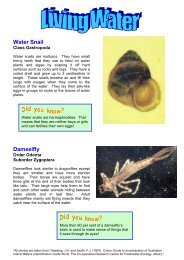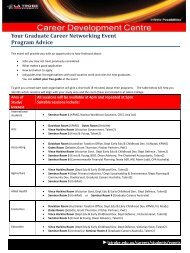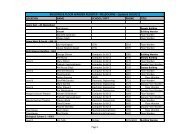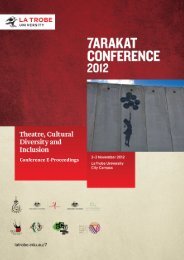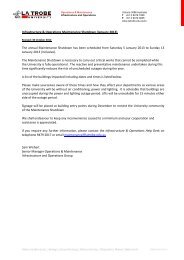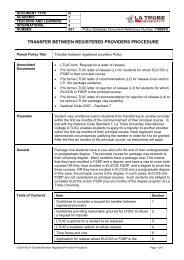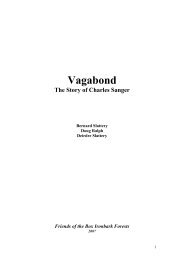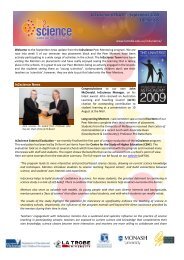Project Report - La Trobe University
Project Report - La Trobe University
Project Report - La Trobe University
Create successful ePaper yourself
Turn your PDF publications into a flip-book with our unique Google optimized e-Paper software.
How did we go? <strong>Project</strong> evaluation<br />
Gaspar Dawing sings a song he composed some years<br />
ago about Chananaw (included in our book Ichananaw<br />
Songs and Stories). His daughter Karen (Irish Grace)<br />
Dawing stands nearby, listening to the song. Our digital<br />
voice recorder sits atop a pile of books, recording<br />
Gaspar’s song.<br />
Indigenizing Education in a Kalinga Public School | 22<br />
Now, with hindsight, we can sit back and reflect on<br />
how the entire project measured up against our<br />
initial hopes.<br />
Overall, we, and everyone else involved, it seems,<br />
are very pleased with the entire project. We<br />
managed to create, produce and present to the<br />
Dananao Elementary School a suite of high quality<br />
educational materials, all in a relatively short time.<br />
Sixty-seven individuals from across four countries<br />
directly contributed to these materials, with many<br />
more providing indirect support. Most importantly,<br />
the educational materials are a considerable first<br />
step towards documenting the Ichananaw’s rich<br />
cultural heritage to assist its transmission to the<br />
tribe’s future generations. We initiated a series of<br />
partnerships between the Ichananaw and various<br />
sectors of the Philippine and Australian<br />
communities which already show promise to<br />
continue in the project’s wake. We parted with the<br />
community on good terms, with some tribe<br />
members, who may have been initially suspicious<br />
of the project and our underlying intentions,<br />
expressing their gratitude for what we’d done and<br />
inviting us to return for further work. This is<br />
important as it sets a positive precedent for future<br />
involvement we (or others connected to us) may<br />
have with the Ichananaw. Also, as we’d hoped, the<br />
five months has opened up several new avenues<br />
for further engagements both by ourselves and<br />
others.<br />
Why was it so successful?<br />
Given the apparent success of the project, we think<br />
it is worth asking: why were we able to pull it off in<br />
such a short time, and with what some may<br />
consider limited resources? This has been valuable<br />
for us to consider simply for ourselves, but may<br />
also hold useful lessons for others conducting<br />
similar community development or social research<br />
projects. The following are what we consider to be<br />
the main factors contributing to the success of the<br />
project:


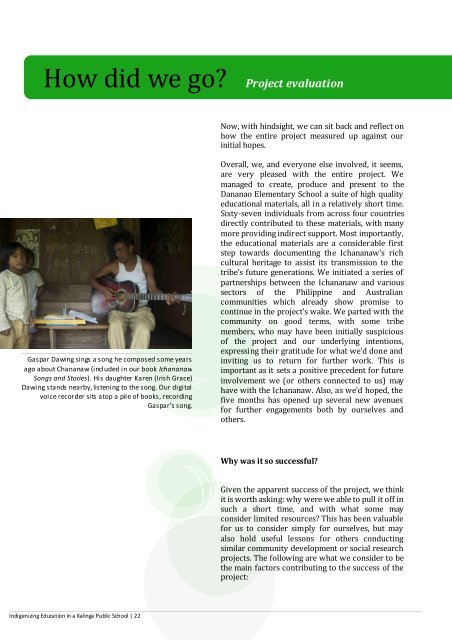
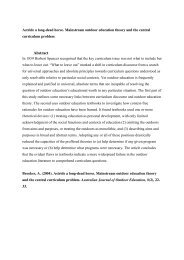
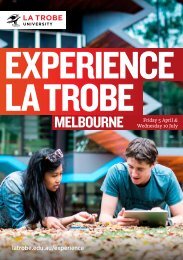
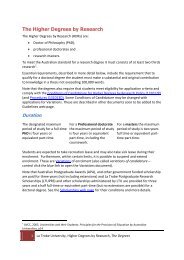
![Ottoman Empire course brochure [PDF 612KB] - La Trobe University](https://img.yumpu.com/12001562/1/184x260/ottoman-empire-course-brochure-pdf-612kb-la-trobe-university.jpg?quality=85)
![Getting Ready to Talk Manual [PDF 315KB] - La Trobe University](https://img.yumpu.com/11430807/1/190x245/getting-ready-to-talk-manual-pdf-315kb-la-trobe-university.jpg?quality=85)
